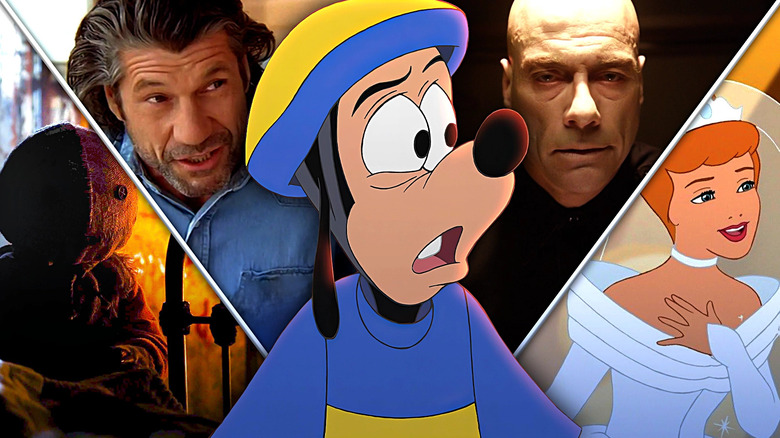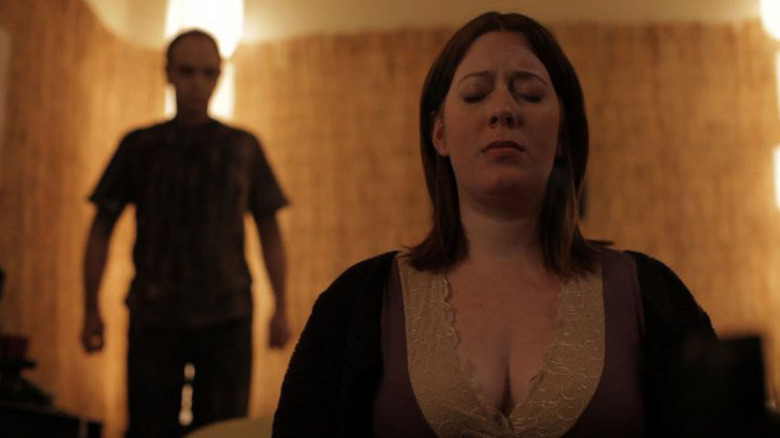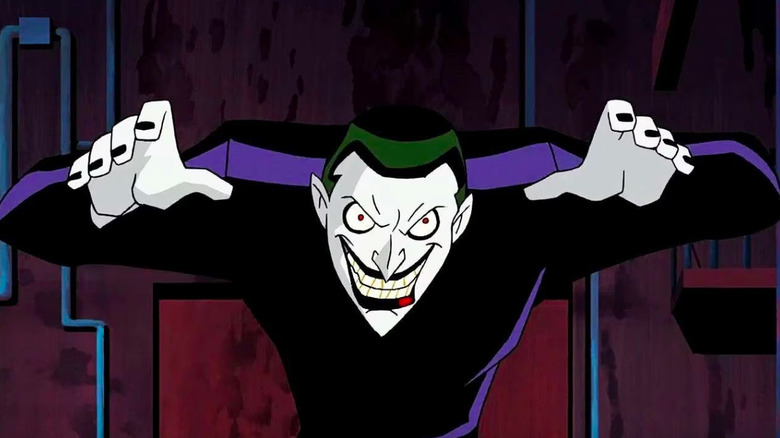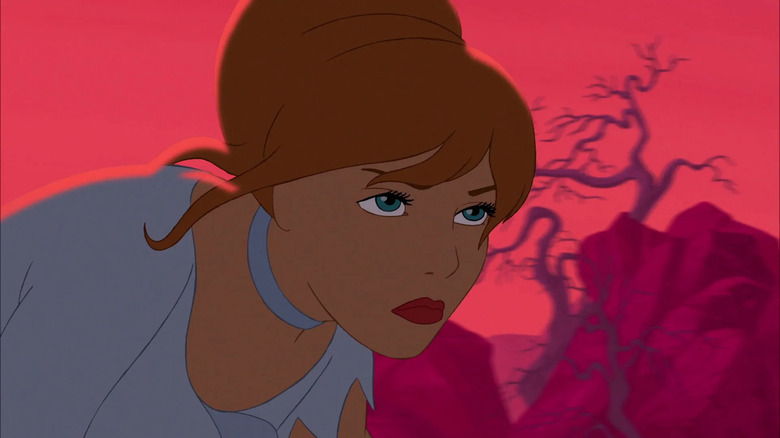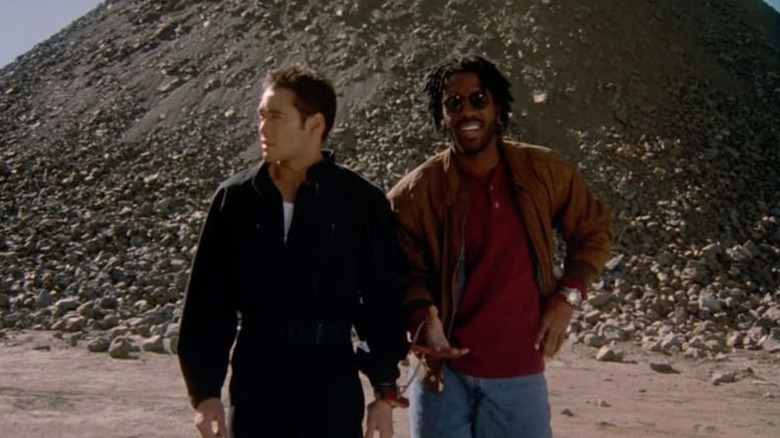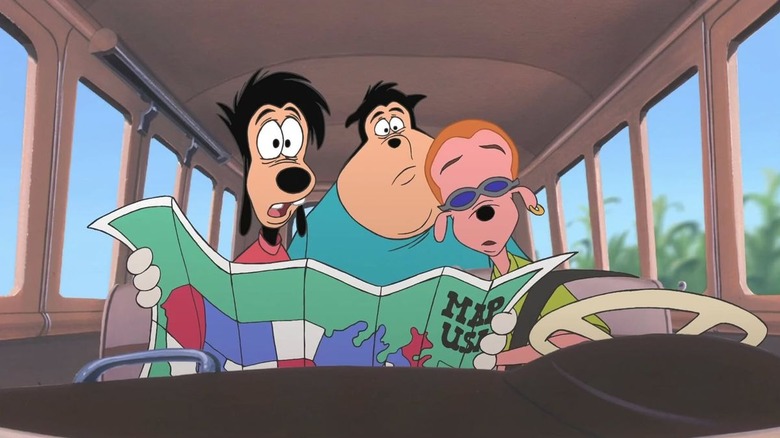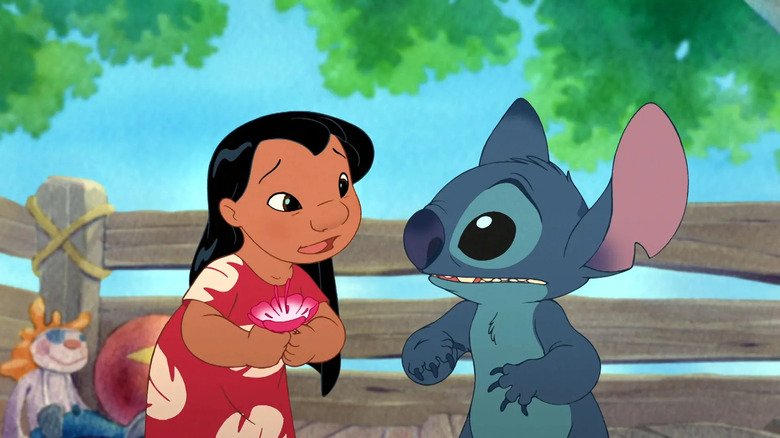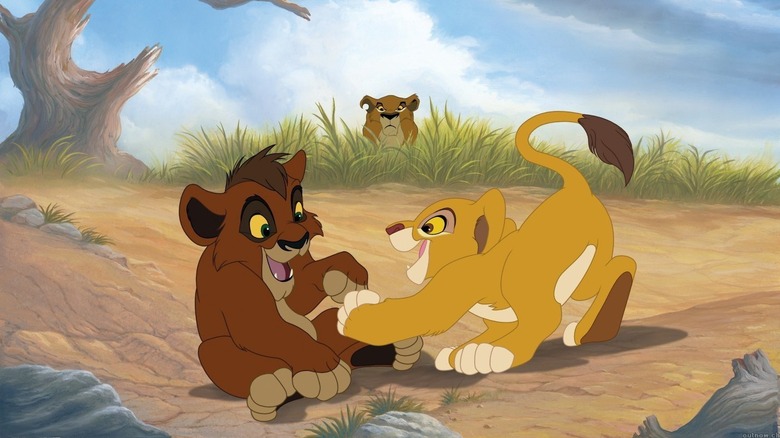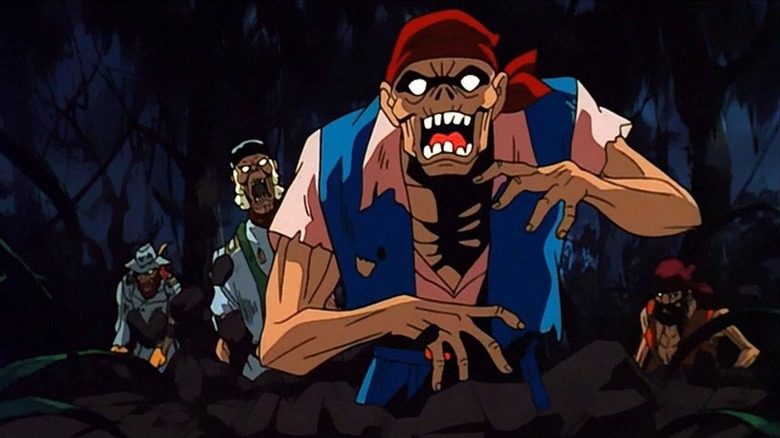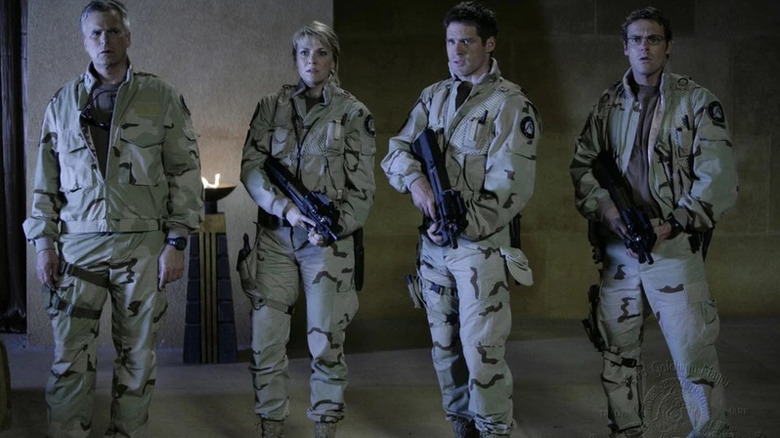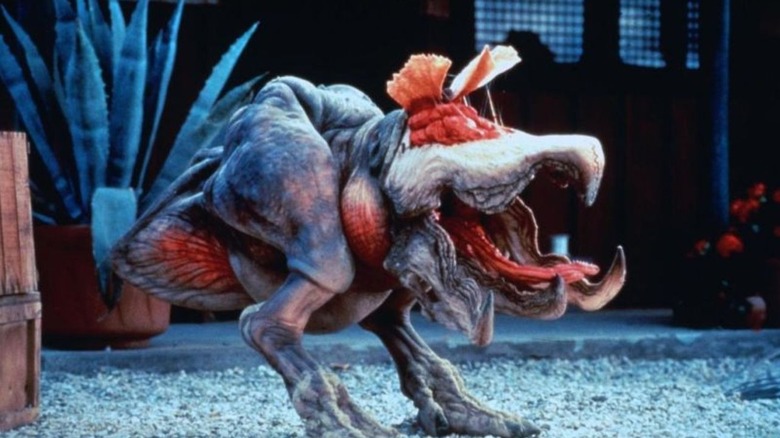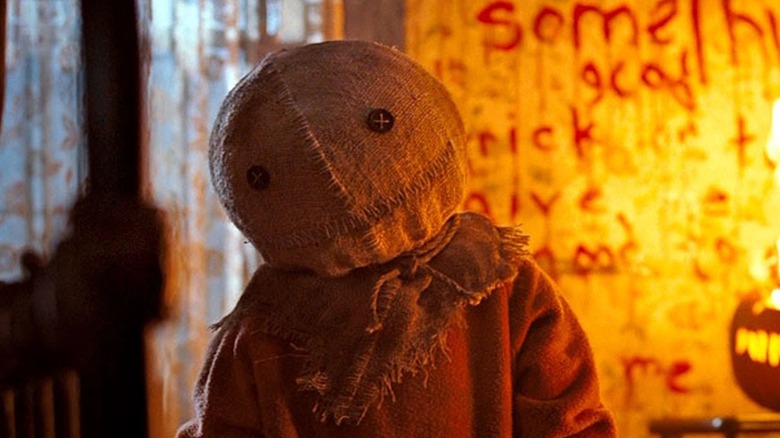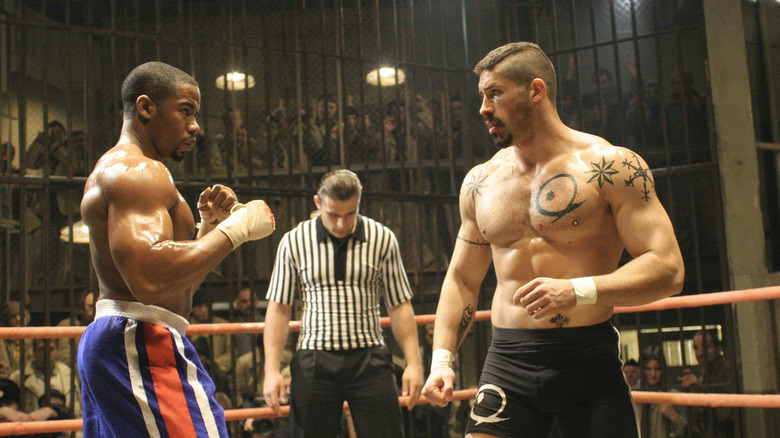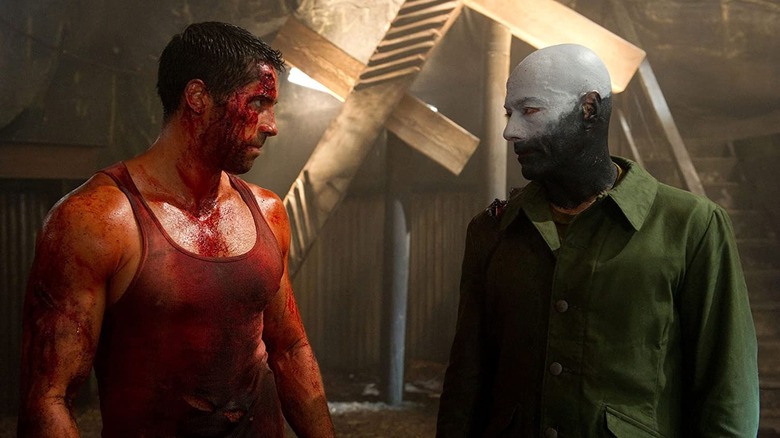13 Best Direct-To-Video Movies Of All Time
Direct-to-video movies get a bad rap. They tend to have lower budgets than movies shown theatrically, and their release strategy indicates a lack of support from studios. They're also far less prevalent than they once were. As the film industry changed and adopted new technologies, direct-to-VOD and streaming movies usurped the direct-to-video (DTV) industry. In fact, Disney shut down its direct-to-video animation studio Disneytoon in 2018.
As such, DTV movies represent a bygone era when the division between movies released in theaters and those released on video -– in both budget and perceived quality -– was more significant than it is today. Even the worst DTV films feel special because these kinds of low-budget films produced by major studios no longer exist.
But not all DTV movies should be thrown in the garbage. Some of these films became cult classics, despite their lowly DTV status. Others remain beloved sequels to theatrically released films that studios weren't willing to gamble with. The films we've compiled below represent the direct-to-video movies that stand out from the pack.
Here are the best direct-to-video movies of all time!
Absentia
Mike Flanagan has become a household name amongst horror fans and Netflix devotees. He first gained prominence following his films "Oculus" (2013) and "Hush" (2016), before making it big with five Netflix horror shows. But before all that success came his first feature film, "Absentia," probably his least-seen project. The movie follows two sisters. The younger sister moves back home following her struggles with addiction, and the older sister's husband went missing seven years ago. A more detailed explanation would spoil the film, but trust us that it is deeply unsettling and compelling, despite its unrefined style.
"Absentia" was a small movie from the start. A Kickstarter campaign funded the film shoot, and the total budget came out to a meager $70,000. The film traveled the festival circuit in 2011 before getting picked up by the now-defunct Canadian distribution company Phase 4 Films, which released the film on DVD and VOD. (This was before streaming, when VOD films were only available through cable.) The film was generally well-received by critics and currently has an 87% score on Rotten Tomatoes. While it's not the director's best, it provides early evidence that Mike Flanagan has always been a great horror filmmaker.
Batman Beyond: Return of the Joker
"Batman Beyond: Return of the Joker," released in 2000, is the third film in the DC Animated Universe, following "Batman: Mask of the Phantasm" and "Batman & Mr. Freeze: SubZero." Centered on Batman's most notorious enemy, the film follows the former Batman, Bruce Wayne (Kevin Conroy), and the current Batman, Terry McGinnis (Will Friedle), as they try to stop the Joker (Mark Hamill) from carrying out his dastardly deeds. Tim Drake (Dean Stockwell) also appears in the film after being brainwashed by the Joker.
DC fans celebrate "Batman Beyond: Return of the Joker" for being one of the best depictions of the Joker on screen, as it gets deeper into the character and his psychology than many other iterations. Indeed, some fans call it one of the best animated superhero films of all time. The movie also includes some pretty violent content for the era, such as torture and death scenes. While it was never released theatrically, Warner Bros. took out some of the violence due to the recent Columbine shooting, and the "theatrical" version was released many years later.
Though the general public might associate the Caped Crusader most with big-budget films like "The Dark Knight," "Batman Beyond: Return of the Joker" is one of the best DC animated movies, and it exemplifies animated DTV movies at their best.
Cinderella III: A Twist in Time
Cinderella remains the most popular Disney princess (a 2023 YouGov poll proved as much), and her popularity accounts for much of Disney's early success. In fact, Disney would have likely folded without Cinderella in the 1950s. What casual fans might not know is that the original "Cinderella" spawned a series, and it only took a half-century to get there.
2002's "Cinderella II: Dreams Come True" was poorly reviewed by critics (it has a dismal 13% on Rotten Tomatoes), but Disney decided to make a third film nonetheless. In "Cinderella III: A Twist in Time," released in 2007, Lady Tremaine (Susanne Blakeslee) casts a time-reversing spell on Cinderella in a plot to prevent her from marrying the Prince (C.D. Barnes).
Lauded by critics and audiences alike, viewers love how it gives the characters more depth, especially the Prince and Cinderella's sister, Anastasia (Tress MacNeille). Some have gone so far as to call it the best Disney sequel ever made (or close to it), which is high praise considering the love for Disney sequels among fans. Indeed, many of the best-loved DTV movies are Disney sequels, as most animated Disney sequels in the 1990s and the 2000s came out on video.
Drive
Though not widely known, the 1997 film "Drive" is beloved by die-hard action fans with the passion to dig into the genre's archives. Directed by Steve Wang, the film was, according to Cinefantastique News, "intended to be the closest approximation of a Hong Kong movie ever produced on U S. shores." "Drive" stars martial arts legend Mark Dacascos as Toby Wong, a man from Hong Kong outfitted with a biodevice that gives him superhuman abilities. Because he doesn't want the device to fall into the hands of the Chinese, he goes on the run.
Along the way, Toby encounters an upbeat songwriter (Kadeem Hardison) and an unhinged woman who's great with a gun (Brittany Murphy). At once a Hong Kong action film and a buddy comedy, the film has enough silliness and non-stop action to please laugh-seeking and thrill-seeking moviegoers.
Unfortunately for Wang, the film turn out as planned. He turned the film into a comedy, but producers re-edited the film and changed the score before its premiere on HBO and release on video. Wang later released a director's cut, the version of the film he once hoped might play in theaters.
An Extremely Goofy Movie
Often included on lists of the best DTV Disney sequels, "An Extremely Goofy Movie" follows the events of the 1995 film "A Goofy Movie," itself a generational cult classic. While the first film centered on Max (Jason Marsden) coming to terms with his father, Goofy (Bill Farmer), "An Extremely Goofy Movie" follows Max as he heads off to college. Goofy loses his job and decides to follow Max to school, testing their relationship. The rest of the film revolves around the X Games, which Max joins because he's a rad skateboarder.
The film is bizarre and over-the-top, but that's precisely what makes it such a memorable and beloved Disney sequel. Placing Goofy characters in a sports movie is an inspired choice, and the film contains plenty of silly hijinks and laugh-worthy moments, including a great fourth-wall-breaking joke about the characters wearing gloves.
"An Extremely Goofy Movie" never had a chance at a theatrical release, as Disney kept most of their sequels within the DTV market, but Disney fans continue to hold the film in high regard even 25 years later. On Letterboxd, one fan loved it so much they called it "'The Godfather Part II' of direct-to-DVD Disney sequels."
Lilo & Stitch 2: Stitch Has a Glitch
For those who grew up in the early 2000s, "Lilo & Stitch" was one of the most beloved Disney properties of the era. The franchise began with the 2002 film "Lilo & Stitch," followed in 2003 by the first sequel, "Stitch! The Movie," which served as a backdoor pilot for the TV series. "Lilo & Stitch 2: Stitch Has a Glitch," the third film in the franchise but the second chronologically, was released in 2005, followed by a television film in 2006.
Now that we've got that confusing timeline out of the way, let's dig into why "Lilo & Stitch 2" is such a great sequel. First of all, "Lilo & Stitch 2" carries on the soul of the original movie, which was a story about a young orphan in Hawaii and her bond with an alien. In this film, Lilo (Dakota Fanning) wants to enter a hula competition in honor of her late mother, but Stitch's (Chris Sanders) malfunctioning hardware threatens her chances.
The film keeps the context of Hawaii at the forefront. While Lilo's bratty white classmate enters the hula competition to help her dad advertise his shop, Lilo chooses to honor the Hawaiian legend Hiʻiaka, reminding us that the heart of the franchise is about tradition and belonging. As Stitch so wisely repeated in the original film, "Ohana means family. Family means no one gets left behind or forgotten."
The Lion King II: Simba's Pride
One of the most beloved and highest-grossing animated Disney movies of all time, "The Lion King" remains the gold standard for many Disney fans. Despite the success of that 1994 film, Disney still decided to go the direct-to-video route with the "Lion King" sequel (and prequel). The first and only sequel, "The Lion King II: Simba's Pride," clinches a spot on this list, though the prequel, "The Lion King 1½," gives it a run for its money.
For those not well-versed in "Lion King" lore, "The Lion King II" depicts a Shakespearean family drama à la "Romeo and Julie," appropriate since the original movie is basically "Hamlet." The film centers on Kiara (Neve Campbell), the daughter of Simba (Matthew Broderick) and Nala (Moira Kelly) and thus heir to the kingdom. Kiara falls in love with Kovu (Jason Marsden), part of a pride of exiled lions who once supported Scar. Simba hates the exiled tribe and doesn't want them to be together, while Kovu's mother wants him to be king.
Even though Simba seems to have forgotten everything he learned in the first film, "The Lion King II" presents an engaging (if familiar) plot. And we can't forget the soundtrack, which, despite the lack of Elton John, is up there with the best of the best. Even without a theatrical release, the movie made $300 million in sales and rentals, making it an impressive follow-up to one of Disney's biggest box office successes.
Scooby-Doo on Zombie Island
1998's "Scooby-Doo on Zombie Island" is an animated film for kids, but strangely, it's also a horror movie and the best of the franchise's direct-to-video films.
Notable for being one of the first "Scooby-Doo" stories to feature actual supernatural creatures rather than people in costumes (a hallmark of the franchise), the film pushed the boundaries of what a "Scooby-Doo" film could be. Instead of relying on the same old gags, "Zombie Island" allows the characters to react as real people would, interspersing the frights with moments of eerie silence rather than jokes. In our oral history of "Scooby-Doo On Zombie Island," model coordinator Lance Falk explained the key to the movie's success like this: "It's just kind of more grown up, isn't it? It doesn't talk down to anyone, it avoids clichés."
Adding to its prestige, the movie features Mark Hamill and Adrienne Barbeau -– sporting an unexpected French accent –- as supporting voice actors, and a cover of the theme song by Third-Eye Blind. It was also the first "Scooby-Doo" production animated by Japanese company Mook, and the film's fresh look and tone heralded a new era for the franchise.
Stargate: Continuum
Ten seasons is a good run for any television show, but when "Stargate SG-1" was canceled after its tenth season, fans wanted more. Luckily, MGM was willing to give them more in the form of two direct-to-video movies. The first film, "Stargate: The Ark of Truth," follows the SG-1 crew as they attempt to locate an artifact that will help them defeat antagonistic beings called the Ori. The sequel, "Stargate: Continuum," finds the SG-1 team trying to restore the original timeline after a powerful being named Ba'al (Cliff Simon) creates an alternate timeline where Stargate never existed.
Though "Stargate" fans were glad to have more content in any form, "Continuum" stands out as the best of the sequels. "The Ark of Truth," originally conceived of as a new season of the show, had the difficult job of wrapping up the series in under two hours. Meanwhile, rather than continuing where the series left off, "Continuum" serves as more of a standalone movie that still retains the best parts of the television show.
As "Stargate" superfans wrote in GateWorld, "The movie has the perfect blend of the familiar and the new, with homages to SG-1's 10-year run sprinkled into a compelling and original take on time travel." While it might not be as compelling for non-"Stargate" fans, it stands out as a well-done sci-fi film without a theatrical release. For those looking for the best way to watch the entire "Stargate" saga, we've got you covered.
Tremors 2: Aftershocks
Though the 1990 film "Tremors" made a total of only $16 million at the box office, that didn't stop it from becoming a cult classic. Thanks to the VHS boom of the 1990s, the film went on to have huge success on video and television. Then came the 1996 sequel, "Tremors 2: Aftershocks." Originally proposed as a theatrical release, the movie pivoted to DTV once it became clear that stars Kevin Bacon and Reba McEntire wouldn't be reprising their roles.
Instead, we see the return of Earl Bassett (Fred Ward), now an expert on Graboids (the worm-like creatures from the first film). An oil executive hires Earl to hunt a new iteration of the creatures, called Shriekers. The sequel continues the goofy, B-movie tone of the first film, with a few updates. In "Tremors 2," the characters are no longer merely trying to survive – they're fighting the creatures on purpose, now with knowledge and an impressive arsenal of weapons.
The creature design of these evolved Graboids is a delight, and so are the witty one-liners that stack up against the great action flicks of years past. It's far from serious, important cinema, but it wasn't meant to be. Indeed, the reason "Tremors 2" is so enjoyable is because it doesn't take itself too seriously, and plenty of sequels followed it too.
Trick 'r Treat
From the way horror fans talk about the 2007 film "Trick 'r Treat," you'd think it was a massive hit, but you'd be wrong. An anthology film with one central figure (a child-sized demon in pajamas with a pumpkin head hidden by a burlap mask), "Trick 'r Treat" follows four stories that take place on Halloween. The stories concern a principal with buried bodies in his yard, a group of teenagers who take a spooky prank too far, a sheltered college student who attends a raucous bonfire, and an old man who despises Halloween.
Directed by first-time filmmaker Michael Dougherty, the film was slated for a theatrical release in October of 2007, and prior to this date, there was already merchandise being sold in stores (via Complex). While the production company behind the film, Legendary Pictures, was excited about the film, especially after a great response at film festivals, Warner Bros., the film's distributor, was not. They postponed the release, and the film was eventually put on DVD in 2009 with little fanfare.
"Trick 'r Treat" took a strange journey to become a Halloween classic, as the film continued to gain accolades among horror fans in the years following its unceremonious release, and several theaters have hosted special screenings of the film since then. One of the most popular DTV horror films of all time, this Halloween slow burn deserves a prized spot in this roundup.
Undisputed II: Last Man Standing
Like many films on this list, "Undisputed II: Last Man Standing" is a direct-to-video sequel of a theatrically released movie. The first "Undisputed" stars Ving Rhames as Chambers and Wesley Snipes as Hutchen, two "undisputed" champions in their arenas: Chambers in heavyweight boxing and Hutchen in a secret prison boxing ring. When Chambers gets sent to the same prison as Hutchen, a duel ensues.
Though the film did poorly at the box office and received middling reviews from critics, there was enough interest to spawn two sequels. The first, "Last Man Standing," continues Chambers' story, but this time with Michael Jai White in the lead role. Initially out of prison, Chambers travels to Russia for a match, only to get framed for cocaine possession and locked up once more. While in a Russian prison, he faces off against Yuri Boyka (Scott Adkins) in another secret prison ring.
Fans have praised the film for its stylish and technical fighting sequences. In one post about the series, blogger and action aficionado Jack Thursby writes that "the major selling point is the fighting scenes which are some of the most truly balletic martial arts I've seen." It's no "Rocky," but director Isaac Florentine does an admirable job choreographing and shooting the fight scenes, putting it a step above the original.
Universal Soldier: Day of Reckoning
"Universal Soldier: Day of Reckoning," the sixth and final film in the "Universal Soldier" series, came out a full 20 years after the original. In 1992, Jean-Claude Van Damme and Dolph Lundgren starred in "Universal Soldier," playing two soldiers who are revived and turned into supersoldiers after their deaths. In "Day of Reckoning," Van Damme and Lundgren reprise their roles alongside prolific fighter Scott Adkins, often called the king of direct-to-video action cinema.
Most of the DTV sequels in this franchise are considered cult classics by fans, but surprisingly, the final film rises to the top. Putting aside the compelling performances for a moment, what stands out about "Day of Reckoning" is its unique style and tone, upending expectations for what a DTV action film can be. More of a horror film than anything else, "Day of Reckoning" places brutal fight scenes within the confines of a dream-like, Lynchian universe.
Critic R. Emmet Sweeney writes at Film Comment: "[Director John] Hyams has created a truly unique object, a horror-action-flicker film about uniquely expressive bodies haunted by the minds and memories they are forced to house." Indeed, the film balances brawn and brains (though the latter element can be hard to follow) in such a way that surprises even longtime fans of the genre.
